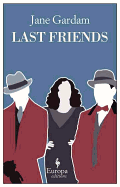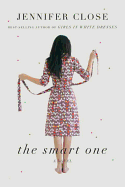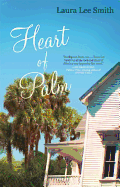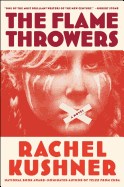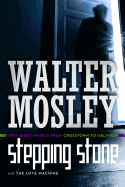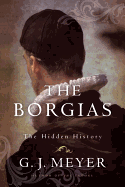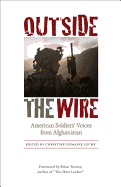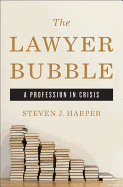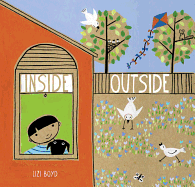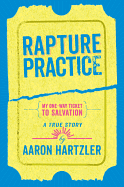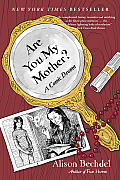 Are You My Mother? by Alison Bechdel (Mariner, $15.95)
Are You My Mother? by Alison Bechdel (Mariner, $15.95)
Are You My Mother? confirms what anyone who has read Fun Home already knows: Alison Bechdel is the premier master of graphic comic narrative. Having explored her father's secret gayness and suicide in her first memoir, here she takes on her sometimes chilly, smart and ambiguous mother--a poet who gave up her art for love, an actress and a housewife with three children. She taps into the universality of mother and child with extraordinary revelations, engaging the reader with her insights, using comic book tools to take one to terrifying places.
Beautiful Ruins by Jess Walter (Harper Perennial, $15.99)
Jess Walter gets better and better with each novel, and Beautiful Ruins has hit the trifecta: irresistible story, rich characters, captivating Italian and Hollywood settings. It segues between years and characters and its entirety is sweetly and slowly revealed through an American actress, Dee Moray, the men who are captivated by her, and Liz and Dick while filming Cleopatra--squabbling, drunk, breaking up two marriages. This is a ripping great story filled with moments of hilarity, poignancy, dreams and invention.
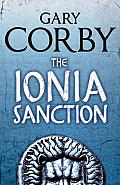 The Ionia Sanction by Gary Corby (Soho Crime, $14.95)
The Ionia Sanction by Gary Corby (Soho Crime, $14.95)
Nicolaos, the only private investigator in ancient Athens, has a problem. The Ephesian ambassador is dead, Nicolaos let the murderer get away, and Pericles, the ruler of Athens, has threatened to fire him unless he can fix things. The sole clue lies with his former slave, Asia, so Nicolaos buys her, whereupon she reveals to him that she is the daughter of Themistocles, now a powerful diplomat within the Persian Empire. Full of real historical figures and fascinating insights into Greek and Persian culture, The Ionia Sanction is a delightful romp.
Joe Golem and the Drowning City by Mike Mignola and Christopher Golden (St. Martin's Grifin, $17.95)
Molly McHugh is a bright young girl in the drowning city of lower Manhattan. She's Felix Orlove's assistant and witness to his true talent in contacting the dead, until a being from another dimension connects through Felix, killing him. Thus begins this wild, weird romp as Molly flees from the strange gas-masked creatures sent by Dr. Cocteau to capture her. She's rescued by Joe, a hulking, super-strong man with a mysterious past who takes Molly in as the last great hope in saving the universe from the mind-boggling Lovecraftian horror from beyond.
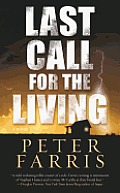 Last Call for the Living by Peter Farris (Forge, $7.99)
Last Call for the Living by Peter Farris (Forge, $7.99)
Peter Farris's debut novel is an in-your-face crime thriller that starts out with a simple heist: Hobe Hicklin, a violent ex-con, hits up an isolated bank branch in rural Georgia. For reasons that Hicklin can't quite explain, though, he takes one teller hostage, and the life of Charlie Colquitt, a quiet and nerdy college student, will never be the same. Gritty and real, the dark side of rural Georgia's sketchy bars, trailers and snake-handling charismatic churches are a backdrop as the cops and the Aryan Brotherhood work equally hard to find Hicklin, and now Charlie.
Robert B. Parker's Lullaby by Ace Atkins (Berkley, $9.99)
Fourteen-year-old Mattie Sullivan walks into private investigator Spenser's office looking to set the record straight on her mother's murder four years earlier. Spenser listens, takes the case and soon finds himself embroiled in a dark element of Boston no one's willing to talk about. Taking on the challenge of continuing the much-loved Spenser series after Parker's death is a daunting task. Ace Atkins responds with a knock-out punch in round one. Parker would most definitely approve.
The Watchers by Jon Steele (Signet, $9.99)
A sweet, simple bellringer--le guet, "the watchman,"--a call girl on retainer to some of the world's wealthiest men, and a British detective who--for some reason--can't remember much about his life, come together in Lausanne. Steele's take on the alternative theological thriller blends the legends of a suppressed ancient text with pulp noir archetypes and a sweet but simple man on the side of the angels. He teases his answers out, but once he's got everything lined up the way he wants it, the final act is pure blockbuster.
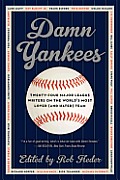 Damn Yankees: Twenty-Four Major League Writers on the World's Most Loved (and Hated) Team by Rob Fleder (Ecco, $15.99)
Damn Yankees: Twenty-Four Major League Writers on the World's Most Loved (and Hated) Team by Rob Fleder (Ecco, $15.99)
The New York Yankees have come to symbolize "everything good and strong and true about baseball and America and the human race in general. Either that, or avarice and unrepentant evil." Damn Yankees is a collection of original essays that reflect those diverging views, as an all-star lineup of writers from the fields of sports (Tom Verducci, Sally Jenkins), literature (Nathaniel Rich) and even finance (James Surowiecki) share their thoughts on this quintessential sports dynasty.
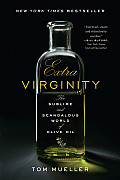 Extra Virginity: The Sublime and Scandalous World of Olive Oil by Tom Mueller (W.W. Norton, $16.95)
Extra Virginity: The Sublime and Scandalous World of Olive Oil by Tom Mueller (W.W. Norton, $16.95)
The first oil wars--the battle for resource supremacy in the West--took place in the Mediterranean climes of ancient Greece and Rome. Olive oil, not crude, served as the source of life and sustenance, a salve and aphrodisiac that also cemented peace and provoked war between nations and linked the earthly to the divine. And now, it's often tampered with or rendered tasteless by inferior fruits and by-products in watered down, cleverly disguised vintages lining today's supermarket shelves.
God's Hotel: A Doctor, A Hospital, and a Pilgrimage to the Heart of Medicine by Victoria Sweet (Riverhead, $16)
When Dr. Victoria Sweet began working at Laguna Honda, she knew the hospital's monastic turrets and arches, peeling paint and lively aviary distinguished it from its gleaming modern counterparts. But it wasn't just a hospital: it was an almshouse, with its roots in the medieval French "Hôtel-Dieu"--God's hotel. Populated with the poor and homeless, the ill and addicted, Laguna Honda was hospital, shelter, rehabilitation clinic and halfway house. Sweet's book is a philosophical, compassionate reflection on 20 years at America's last almshouse.
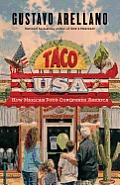 Taco USA: How Mexican Food Conquered America by Gustavo Arellano (Scribner, $16)
Taco USA: How Mexican Food Conquered America by Gustavo Arellano (Scribner, $16)
Gustavo Arellano is the author of the nationally syndicated column ¡Ask a Mexican! (and a 2008 book with the same title). Fans will recognize his voice in Taco USA: wise and knowledgeable, conversational--and very, very funny. Arellano capably handles the history of Mexican people and their cuisine, and its interpretations in the United States. Even the experienced border-dweller or Mexican food aficionado is likely to learn a lot, and giggle while doing so. Just beware a growing desire to run out and get a burrito.
When I Left Home: My Story by Buddy Guy with David Rich (Da Capo Press, $15.99)
Buddy Guy defined the sound of the Chicago blues and influenced a generation of rock guitarists: Eric Clapton, Stevie Ray Vaughn, Jimi Hendrix and Jimmy Page, to name just a few. In Guy's life story, from growing up the son of Louisiana sharecroppers to becoming a legend, he discusses his own failings and mistakes along the way with the candor and humility of a genuinely nice human being who sees his extraordinary success as a gift not to be squandered.
Wild: From Lost to Found on the Pacific Crest Trail by Cheryl Strayed (Vintage, $15.95)
Wild is a poignant, no-holds barred, kick-ass memoir that will grab you by the throat and shake you to your core. For many readers, Strayed's book about hiking the Pacific Crest Trail--running from the Mexican border to Washington State--to save her life, needs little introduction. Now, this powerful and raw, deeply felt, often humorous, beautifully written story that turns hiking into an act of redemption and salvation will get even more exposure in paperback.
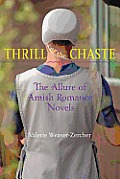 Johns Hopkins Press has just published a book called Thrill of the Chaste: The Allure of Amish Romance Novels by Valerie Weaver-Zercher. The cover is the clichéd image of a young woman from the back, in Amish clothes; what makes the cover snap is the punny title (voted best of the year by our office) and the words "of the" running down the ribbon on the back of the bonnet. The promise of the cover is borne out by the content: an engaging analysis of "bonnet rippers" and their audience.
Johns Hopkins Press has just published a book called Thrill of the Chaste: The Allure of Amish Romance Novels by Valerie Weaver-Zercher. The cover is the clichéd image of a young woman from the back, in Amish clothes; what makes the cover snap is the punny title (voted best of the year by our office) and the words "of the" running down the ribbon on the back of the bonnet. The promise of the cover is borne out by the content: an engaging analysis of "bonnet rippers" and their audience.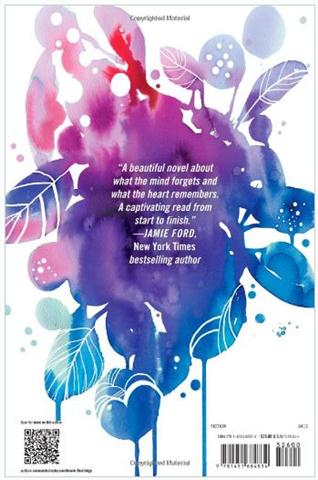


BINC.1024.B1.HELPABOOKSELLER.jpg)
 Gary May is a professor of history at the University of Delaware. Winner of the Society of American Historians' Allan Nevins Prize and author of four books, his previous books include The Informant: The FBI, the Ku Klux Klan and The Murder of Viola Liuzzo. His new book is Bending Toward Justice: The Voting Rights Act and the Transformation of American Democracy (Basic Books). The Supreme Court has heard oral arguments challenging Section 5 of the 1965 Voting Rights Act, the "preclearance" provision that requires states with a history of racial discrimination to receive federal permission before making any changes to their voting laws. This provision was crucial during this year's presidential election and prevented the passage of voter identification laws in Texas and South Carolina. The ruling is expected in June. Attorney General Eric Holder recently vowed to enforce federal voting rights laws aggressively no matter what the Supreme Court decides this year.
Gary May is a professor of history at the University of Delaware. Winner of the Society of American Historians' Allan Nevins Prize and author of four books, his previous books include The Informant: The FBI, the Ku Klux Klan and The Murder of Viola Liuzzo. His new book is Bending Toward Justice: The Voting Rights Act and the Transformation of American Democracy (Basic Books). The Supreme Court has heard oral arguments challenging Section 5 of the 1965 Voting Rights Act, the "preclearance" provision that requires states with a history of racial discrimination to receive federal permission before making any changes to their voting laws. This provision was crucial during this year's presidential election and prevented the passage of voter identification laws in Texas and South Carolina. The ruling is expected in June. Attorney General Eric Holder recently vowed to enforce federal voting rights laws aggressively no matter what the Supreme Court decides this year.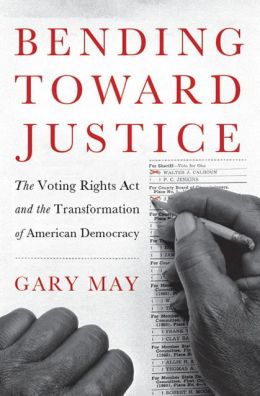 Where did the title of this book come from?
Where did the title of this book come from?
 The Ionia Sanction
The Ionia Sanction



